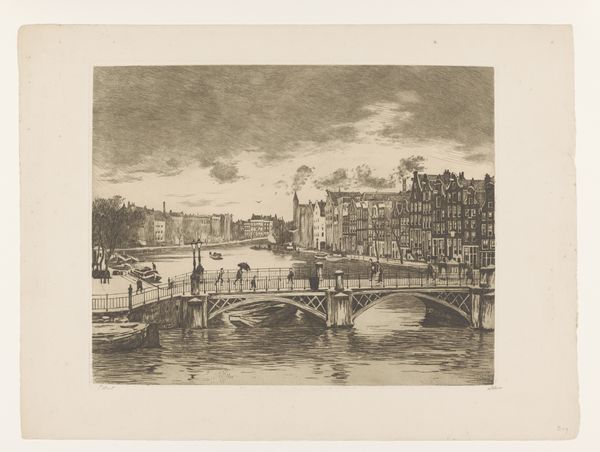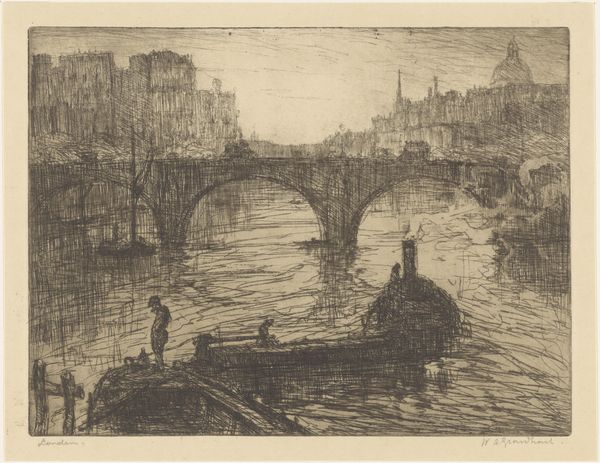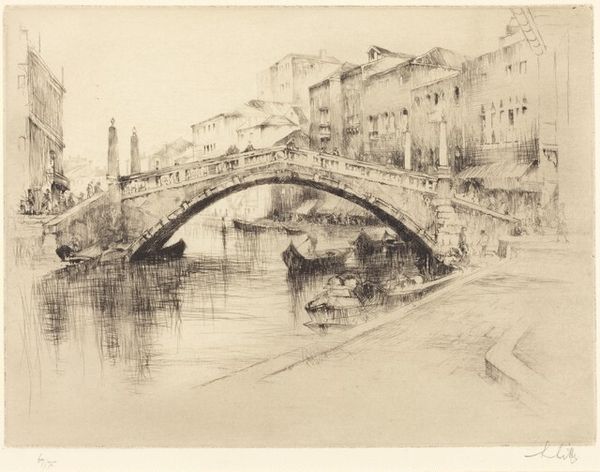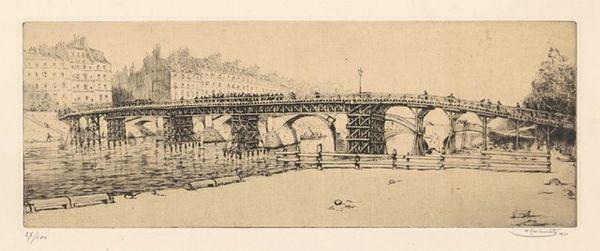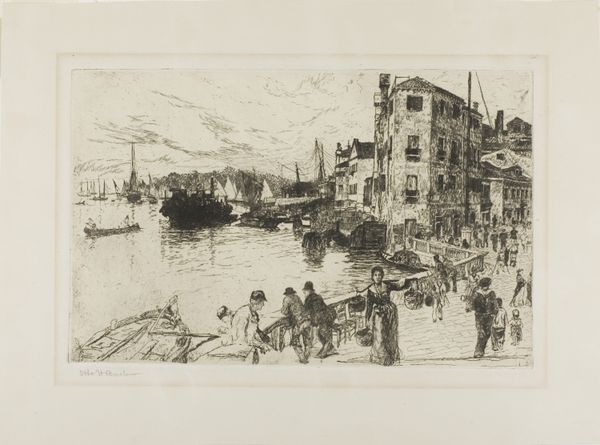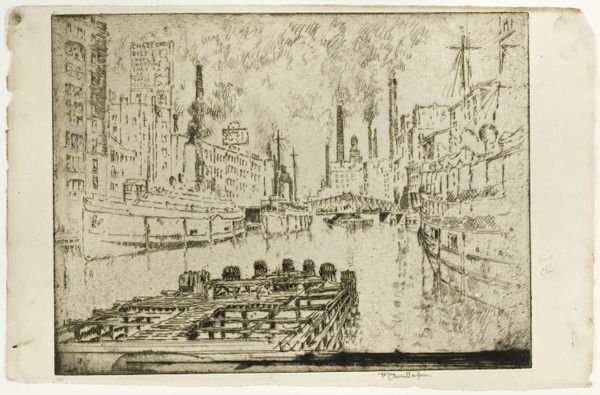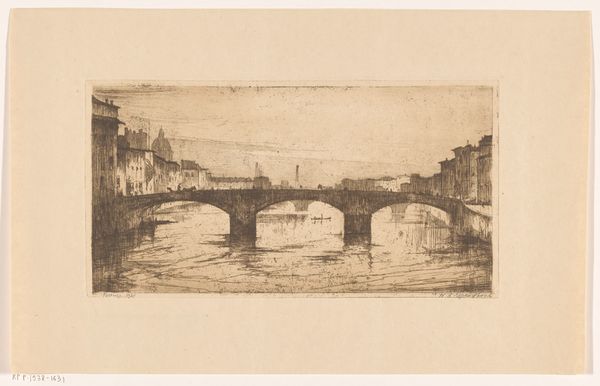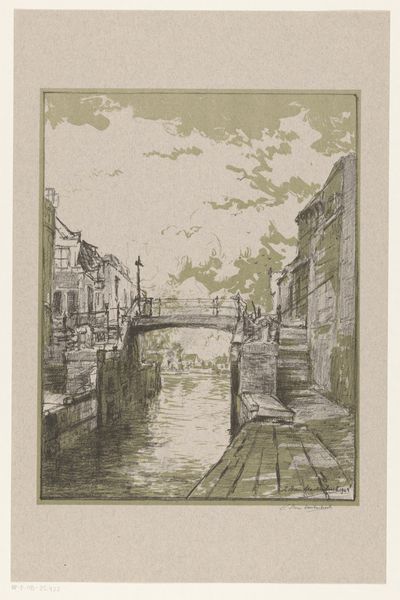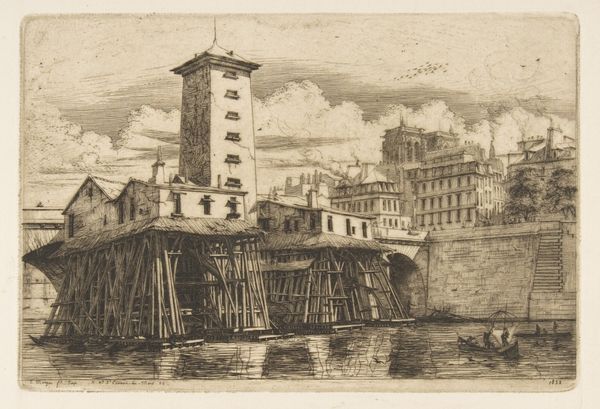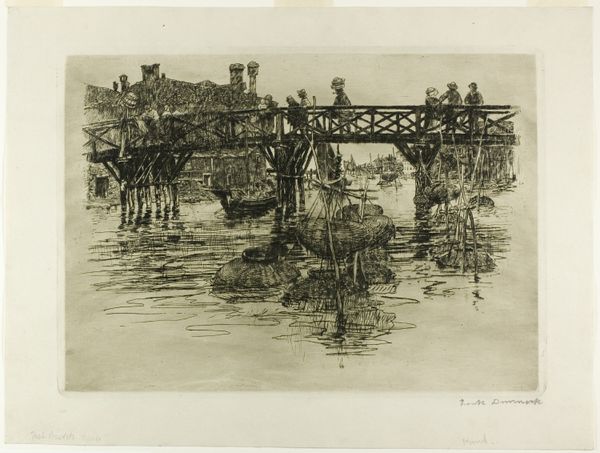
Dimensions: sheet: 14 11/16 x 21 7/16 in. (37.3 x 54.5 cm) plate: 11 1/4 x 18 11/16 in. (28.5 x 47.5 cm) image: 10 7/8 x 18 3/8 in. (27.7 x 46.6 cm)
Copyright: Public Domain
Curator: Frank Duveneck created this etching, "The Rialto, Venice," in 1883. It’s currently held at the Metropolitan Museum of Art. Editor: Immediately, I’m struck by how busy it feels. The bridge seems like the central element, but the eye darts around to all the boats and buildings, almost as if everything is fighting for dominance. It's also very grayscale; a sort of quiet riot. Curator: That bustling sensation absolutely reflects the Rialto’s role as Venice’s commercial hub during that time. Beyond its picturesque qualities, we have to recognize it as the core of the Venetian economy. Duveneck, who spent a lot of time in Venice, captures this feeling by depicting many laborers alongside tourists in his cityscape. Editor: That is certainly communicated in the piece, and while visually rich, this print leaves me wanting to learn more about who is doing what—for whom—and what social relations of production mark the time. It’s as though we're seeing a moment in Venetian economic history being visually articulated through Duveneck's pen and ink, with laborers positioned low on the bank and the architectural heights further back suggesting those with access to capital. Curator: Exactly! Look at how the structure of the Rialto, built centuries prior, still dictates movement and, indeed, capital flows, both material and social. That intersection feels very pointed. Consider how the physical form embodies social and economic stratification! Editor: Right—even how he frames it all! Duveneck isn’t offering just a charming Venetian vista; he's really framing Venice, showing a perspective interwoven with the hierarchies inherent to the space itself. This encourages deeper inspection; it doesn’t allow us to only celebrate the aesthetics of Venice without reckoning with the structures propping the city. Curator: This particular artwork underscores Duveneck’s artistic intent. We aren't only capturing the visible world, but are offering social critique and understanding. Editor: Ultimately, this drawing pushed me to think more critically about Venetian iconography and the historical narratives around economics and how to best engage the relationship. I am definitely appreciative of this piece. Curator: Yes, "The Rialto, Venice," prompts reflections beyond simple viewing. It’s about uncovering layers and confronting some truths concerning labor and commerce.
Comments
No comments
Be the first to comment and join the conversation on the ultimate creative platform.

